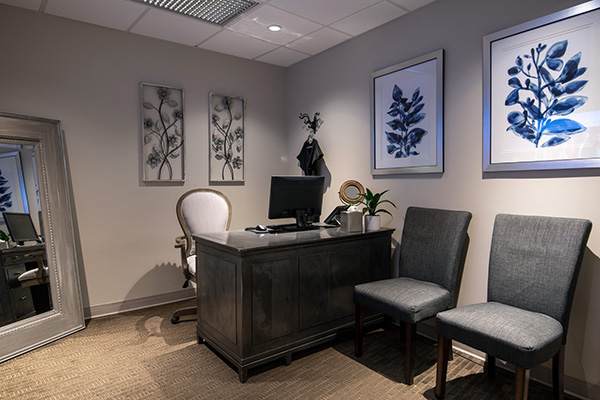
Ingenious Approaches to Fat Transfer Strategies in Visual Surgical Treatment
Introduction: The Advancement of Fat Transfer Strategies in Aesthetic Surgery
In current years, the landscape of visual surgical treatment has actually undergone a substantial change. Amongst the numerous techniques that have actually acquired popularity, fat transfer sticks out as one of the most innovative and desired techniques. With its capability to improve body contours while making use of the patient's own tissue, fat transfer uses a natural alternative to standard implants. This short article delves deep into Innovative Approaches to Fat Transfer Techniques in Visual Surgery, exploring its benefits, methodologies, and future directions.
What is Fat Transfer in Aesthetic Surgery?
Fat transfer, likewise known as fat grafting or lipofilling, involves collecting fat from one part of the body and injecting it into another location requiring volume enhancement. This method is particularly favored for treatments like breast augmentation, facial rejuvenation, and body contouring.
Why Choose Fat Transfer Over Implants?
Patients often consider the choice between breast implants and fat transfer methods for breast enhancement. While implants supply immediate volume, they come with prospective complications such as capsular contracture or implant rupture. Conversely, fat transfer makes use of the client's own fat cells, significantly lowering the danger of unfavorable responses and supplying a more natural look and feel.
The Science Behind Fat Transfer
Understanding Adipose Tissue
Before diving into innovative strategies, it's essential to understand fat's role in our bodies. Adipose tissue serves not just as an energy reserve but also plays a crucial role in hormonal guideline and thermoregulation.
Harvesting Techniques: Conventional vs. Ingenious Methods
The initial step in any fat transfer procedure is gathering the fat. Generally, this was done through liposuction utilizing big cannulas which might harm fat cells. Nevertheless, developments such as micro-cannulas have actually emerged:
- Micro-cannulas: These smaller tubes cause very little trauma to surrounding tissues.
- Ultrasound-assisted liposuction (UAL): This technique utilizes ultrasound waves to melt fat before extraction.
Both methods enhance the quality of harvested fat cells for better retention post-transfer.
Fat Processing Techniques
What Happens After Harvesting?
breast augmentation blackhawkplasticsurgery.comOnce harvested, adipose tissue need to undergo processing before being reintroduced into the body:
Innovative Processing Technologies
Recent improvements consist of:
- Nanofat Grafting: Involves breaking down fat into smaller particles for improved integration.
- PRP (Platelet-Rich Plasma) Enrichment: Combining PRP with transferred fat boosts recovery and increases survival rates of grafted cells.
Innovative Techniques to Fat Transfer Techniques in Visual Surgery
Customized Treatment Plans
Every patient's anatomy is special; thus, personalized treatment strategies are paramount. Surgeons make use of 3D imaging technology to draw up locations requiring enhancement before proceeding with surgery.
Using Innovation for Precision
Advanced imaging tools such as 3D simulations enable clients to picture possible results before undergoing procedures. This innovation assists cosmetic surgeons in preparing accurate injections by evaluating volume distribution across targeted zones.
Applications of Fat Transfer
Breast Enhancement with Fat Transfer
Fat transfer breast augmentation has actually gotten traction among ladies looking for a more natural option to conventional breast augmentation.
Benefits of Fat Transfer Breast enhancement:
- Minimal scarring
- Natural feel
- Reduced risk of issues compared to implants
- Dual advantage: Body contouring at the donor site
Considerations Before Choosing Fat Transfer
While this method offers numerous benefits, it may not be suitable for everyone. Factors such as existing breast conditions or the desire for significant size increase ought to be gone over throughout consultations.
Facial Renewal through Lipofilling
Fat transfer has become progressively popular in facial aesthetics too:

- Restoring volume lost due to aging
- Improving skin texture
- Achieving vibrant shapes without foreign substances
Post-operative Care Following Fat Transfer
Recovery Expectations
Understanding what to anticipate post-surgery can alleviate stress and anxiety:
The Future of Fat Transfer Techniques
Research Innovations on the Horizon
Ongoing studies aim to enhance retention rates additional and check out new applications beyond cosmetic procedures-- such as plastic surgeries after trauma or cancer treatments.
Ethical Considerations in Visual Surgery
As strategies evolve, so do ethical requirements surrounding visual practices:
- Patient consent
- Transparency about threats versus rewards
- Marketing guidelines concerning results expectations
Patient Testimonials on Fat Transfer Experiences
Real-life experiences supply insight into client complete satisfaction levels:
"I selected a fat transfer breast enhancement instead of traditional implants because I wanted something more natural." - Sarah T., 34 years old.
Each story highlights specific motivations behind selecting innovative approaches like fat transfer over conventional options.
FAQs About Fat Transfer Techniques
Q1: The length of time do results from fat transfer last?
Results can differ significantly based on individual elements such as metabolism; however, numerous patients report retaining about 50% or more of moved volume after 6 months.
Q2: Exists any downtime associated with these procedures?
Most clients experience moderate discomfort however return to typical activities within days; however, full healing might take several weeks depending on individual circumstances.

Q3: Can I go through numerous locations during one session?
Yes! Many clients select combined treatments-- like improving breasts while contouring thighs or abdomen-- to maximize their surgical time effectively.
Q4: What are common adverse effects related to fat grafting?
Common negative effects consist of swelling/bruising at both donor & & recipient sites; major problems are unusual when performed by certified specialists adhering strictly to security protocols.
Q5: Do all surgeons use this technique?
Not all plastic surgeons specialize in advanced lipofilling techniques; it's vital for clients looking for these services specifically inquire about their surgeon's experience beforehand!
Q6: What if I want larger breasts than what my offered fat allows?
In cases where a significant increase is desired beyond what can be accomplished through lipofilling alone-- integrating both methods (fat grafting + implants) may be considered!
Conclusion: The Bright Future Ahead
Innovative methods like those seen within modern-day visual surgical treatment continue pressing borders forward-- supplying safe options tailored particularly toward individualized desires while making sure quality care remains paramount throughout each patient's journey toward self-improvement! As we look ahead at emerging innovations promising even higher advancements-- it's clear that interest surrounding subjects like "Ingenious Techniques to Fat Transfer Methods in Aesthetic Surgery" will just grow stronger within our ever-evolving field!
